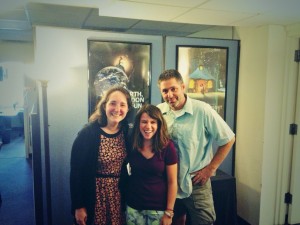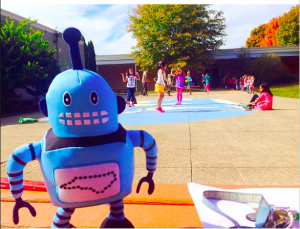The elevators of an aircraft are located on the horizontal stabilizers and work to provide lift for the aircraft. Lift’s force has to be stronger than that of the weight of the aircraft in order for it to fly, and I think I’m finally getting my lift on, y’all.
Throughout the summer, thinking about curriculum hasn’t been the easiest. At the Science Festival, we probably went through at least two or three ideas of what we thought this project would look like until we came up with our definitive vision just a week or so ago. This was hard for me because I like to think writing curriculum is something I’m pretty good at, but when you’re writing and scrapping repeatedly, you don’t exactly feel the most effective.
After meeting with librarians and a children’s literature expert, and having phone conferences with the youth services state librarian coordinator and the Carolinas Aviation Museum, a clear, attainable vision has been drawn out before me, and I like the way that feels. Getting input from these stakeholders has been imperative, because they’re the people for whom I’m doing this. I am desperately searching out feedback for this program from librarians, because I want what I write to be beneficial to them and successful for the children they reach. I want libraries to use this program and see growth in their attendance and individual programs as well.
So, maybe (hopefully) you’re wondering what kind of curriculum it is that I’m finally writing.
Initially, our plan was the four forces of flight — thinking along the lines of physics and how it would be best to disseminate that information to young children. We tested paper airplane models, did a lot of Googling research, and found that maybe we need to take a different approach to this considering the fact that this concept seemed a bit overdone. Granted, just because something is overdone doesn’t mean it’s (a) done well or (b) impossible to do again, but at the Science Festival we’re always looking for ways to be innovative.
A few weeks later and our track is completely different.
Instead of honing in on the physics, we’re extending our runway and encompassing ALL the ways science is tied to flight. We’re looking at the biology (why wings are shaped after birds’ wings, how to survive in space), chemistry (acid-base bottle rockets, how the chemical reactions of rocket fuel work), engineering (prototyping paper planes, learning how the Wright Brothers crafter their successful powered glider), meteorology (kite-building/testing, weather observations linked to rocket launches), and physics (demos with Bernoulli’s principle, four forces of flight basics).
So yeah, we’re covering all the bases. It’s been especially fun for me to think of the bilingual/biliteracy piece, and when coming up with vocabulary and resources I’m doing my best to find things in both English and Spanish. I’m keeping my fingers crossed that others will find this as useful as I do.
I really, truly, massively love this approach to teaching kids about flight. I think it’s crucial to let kids know how multi-faceted and integrated our lives are — flight isn’t just about engineering a plane to fly, but it’s also about things like material making and understanding how to read maps in an air traffic control tower. This is a great plug for integration across subjects, which is big at my school where we do project-based learning.
In addition to the above science-themed activities, I’m also working on a book list, which I mentioned in a previous post. The list is growing and includes informational and fiction books for K-5 students. There’s a little bit of everything on the list, from graphic novels to picture books to biographies to historical fiction. As a reading teacher, this has been so fun to put together and hear from others about what they’d like to see on a list like this. I’ve been working on some fun visual storytelling and writing activities for the program, too.
In my last post, I mentioned how I wasn’t sure how I would make this fit into my classroom, considering this program I’m writing is specifically for libraries, and librarians were adamant about not receiving anything remotely close to a lesson plan for the program. I was a little concerned because I had already spelled out this great culminating task (well, I think it’s great and I have really high hopes for the implementation of the project this fall!) and was hoping my experience with the NCSF would help me knock out some fun, engaging lessons to lead up to that task. Well, fortunately after talking to one of my mentors, we were able to come up with some more space-themed activities for the library program activity menu, and now I’ll be able to implement those in my class this fall!
Everything is a rough draft and a work in progress, but the way the curriculum writing path is now leading feels good. I have clarity, I know what needs to be done, and I’m confident that I’ll be able to knock out some solid lessons for this program that’ll be usable in both a classroom and a library.
Skies are clear and there’s nowhere to go but up.


